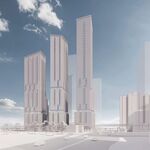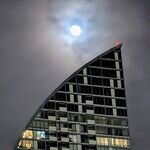reaperexpress
Senior Member
Not right. St. Clair DOES have priority and it is switched on. Just shows that signal priority does not specifically mean "guaranteed green light".
In fact, ALL streetcar routes have some form of signal priority. (Believe it or not!) The system on St, Clair is more intelligent that that on other lines.
Check out this (old-ish) presentation on TTC signal priority:
http://www.signalsystems.org.vt.edu/documents/July2004AnnualMeeting/attach/m8_Sinikas.pdf
That's the exact same presentation that I cited in my post. It refers to a trial of 6 traffic lights, and suggests that it would be a good idea to implement system-wide transit priority. It does not prove that said transit-priority was actually implemented.
EDIT: Maybe you're referring to the map near the end. That is showing where transit priority is "equipped", not where it's activated. We already knew it's equipped on St. Clair and Spadina.
Last edited:




